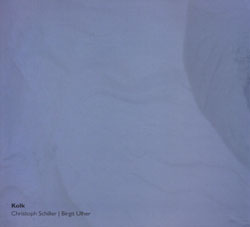
Five unique pieces from improvisers Birgit Ulher (trumpet, radio, speaker, objects) and Christoph Schiller (spinet, preperations) recorded in Hamburg with no post-production work.
Out of Stock
Quantity in Basket: None
Log In to use our Wish List
Shipping Weight: 3.00 units
Sample The Album:
Christoph Schiller-spinet, preperations
Birgit Ulher-trumpet, radio, speaker, objects
Click an artist name above to see in-stock items for that artist.
Label: Another Timbre
Catalog ID: at52
Squidco Product Code: 16497
Format: CD
Condition: New
Released: 2012
Country: UK
Packaging: Cardstock gatefold foldover
Recorded on October 26th, 2010 in Hamburg at Muar Retor.
"Five tight, close, and immaculate improvisations from the leading exponents / abusers of improvised trumpet and spinet. Recorded in Hamburg in October 2010, and sounding like nothing else."-Another Timbre
"Interview with Christoph Schiller
First of all, why the spinet?
I used to play the piano, the spinet came later. I'd always been unhappy with the fact that as a pianist you can't usually play concerts on your own instrument, or sometimes there's no instrument at all. Maybe ten years ago, I got a spinet so that I could play baroque music on a more or less appropriate instrument, and after a while I started trying it for improvised music too. Having taken the decision to develop it for my own purpose, I spent almost a whole year adapting my inside-piano techniques to it, and developing new techniques. It worked well. My first thought was to use it as an alternative to the piano, but soon I abandoned piano completely. As I was interested in 'small' sounds, I'd also been unhappy with the massive body of the piano. The spinet is a much lighter, smaller instrument; I can even travel with it.
Also there's less tension on the strings, and this provides other possibilities, for example when working with an e-bow. I generally like the light sound of the instrument. Even though I play it in a way that's far removed from its 'original purpose', it keeps its character, and funnily enough it works very well with instruments that it "knows" from the baroque world: viola da gamba, violin, recorder. But it also sounds good in electronic contexts. The strings are plucked (when played from the keys), and this makes it much easier to mix inside techniques with keyboard playing, as compared to the piano.
With the piano I always felt aware of the history of piano music behind me. I don't think this is just an intellectual thing, it also has to do with the way sound is produced in a piano. This is a very special technique. The spinet is simpler in its sound production, and perhaps this is why I feel much freer with the spinet. I know its history (baroque music), but I can still use it as if there was no history at all, as I was inventing the instrument completely anew. The spinet and harpsichord didn't play any role in the music history of the 19th and half of the 20th century.
The spinet might be exotic in improvised music; but my instrument isn't just the spinet, but also the preparations and the way I play it. Looked at from this angle, it's no more exotic than a guitar or a laptop or a trumpet.
So can you tell us a bit about the preparations you use? When I've seen you play, you seem to use quite a variety of objects.
I use some small stones, a piece of metal and a glass for either putting on the strings (to shorten or open them), or for placing on the bridge to create distortion effects. And a larger stone for putting on the lower keys to open the strings ('pedal'), as well as some forks, a piece of polystyrene, and various little objects - amongst others, a chopstick, a small cymbal attached to the instrument, and an egg-slicer which holds a ruler. I use a cello-bow for playing on the attached objects and the wooden body, and sometimes even on the lowest string. Also I have two e-bows. I play the strings via the keys or directly with my fingers, plucking or rubbing. For some time I've also placed a Zoom Hn4-recorder inside in the instrument, for recording and immediate playback, over the little built-in loudspeaker. I usually mix this with the same or similar sounds 'live', so it's not always clearly recognisable. On the recording with Birgit I also had a very good cheap kind of fan, but it didn't last very long, and I couldn't find the same model again. I'm always working on varying the combinations of all these and finding new aspects. It is indeed a large variety.
Currently I'm working on a new set-up using some electronics: a pick-up, a microphone, the Hn4 again, and a mixing board. So it's even more stuff! But things come and go, and some objects might disappear after a while, if I find that I don't use them. The spinet itself is one of the objects in a way, even though the most important one.
OK, now onto the disc. Before the music, what about the titles: Kolk, Auflast, Sediment, Geröll and Bult. What are these referring to, and why?
They're all geological terms, referring to the formation of landscape. 'Kolk' is the basin that is washed out under a waterfall, or even under very small "waterfalls". 'Auflast' is a term referring to the process in this situation. 'Bults' are small grass "islands" which occur in a marshy landscape. In a way it's the opposite of Kolk, as it's a positive form, while Kolk is a negative one. Sediment is a geological shift (material sinking to the ground and forming a layer) and 'Geröll' means boulder. All those terms describe landscape features in a certain state, as result of a long-term "sculptural" process, a process that may not be finished, but which is going on very slowly. We don't claim that the process of our music making is as slow as geological developments, but we bring the terms and the music together to achieve maybe a certain point of view. Birgit and I have known each other for a very long time, although we have not always played together during this time. But there are, for example, common "sedimental shifts" in our artistic history, and the music on the disc is the culmination of a long-term development - but as with the geological features too, it's certainly not the end of the process, but a statement of "now".
It strikes me that 90% of your music that I've heard has been in a duo setting. Is that a form that you particularly like, and if so why?
This is not a concept, but yes, I like playing in duo very much. Maybe because it's intimate, and the system of communication is simple and clear. But there are also practical reasons: it's easier to find dates, and it's easier to find possibilities to play concerts, whereas trios and of course larger groups are always more difficult to organise. I play a lot with different people, and duo-playing is the easiest way to be flexible inside the network. But I do also play in other constellations, larger groups, and I like that too! There are even some very large ones, like the IMO improvising orchestra in Switzerland, as well as my vocal ensemble Millefleurs and Carl Ludwig Hübsch's Ensemble X in Cologne. Then I also play solo, but not so much. I really want to do a solo CD as well, but I haven't yet, because I always think I can do it later... it's like visiting tourist spots in your own town: you never do it, because you think you could go there any time. So you only go there with friends from abroad - and then it's a duo again!
Yes, I certainly hear those qualities of intimacy and clear communication in your duo with Birgit. But I think there's also something else in play that I like: a kind of integrity. While, as you say, your music has undergone geological shifts over the years, neither you nor Birgit seems to follow fashions in music. You're both clearly aware of current developments in improvisation, but engage with them in ways that retain your particular history or personality intact. It's an approach that I like very much, but I wonder if it has led you into being a more marginal figure than you might have been if, say, you'd embraced 'Reductionism' as a disciple in an evangelical way?
I think what you call integrity is essential in any artistic work or career. Maybe you're right when you say that I am a rather marginal figure, but I don't know if there is a choice - artistically. There are always many possibilities, but are they really serious possibilities? I think the "freedom" in improvised music is mainly the freedom of finding one's own way, or own solution.
I was and am very aware of, for example, reductionism; it is very important music and there are extremely important ideas in it, that have of course also influenced me. But I think that none of the main protagonists has "followed the style" in order to achieve these results; rather the results are the outcome and consequence of an artistic development. I'm not explicitly trying to "keep distance from stylistic trends", I just don't copy them. There is no point in copying the styles, and I mistrust any rules which pretend to offer a final solution.
For a long time my work was much more marginal than it has seemed in the past couple of years. I learned to do my own stuff, and to follow my artistic instinct and conscience, because I wouldn't have been tempted by any "success" whatsoever. I am quite content with my situation as it is now. I can do my work, and that's fine.
Yes, that makes sense. I'm curious to know exactly how the pieces on 'Kolk' were made. Were they totally improvised, or did you agree to work in certain areas prior to recording each piece, and were they shaped later on through editing?
All pieces are freely improvised. We had recorded a lot of material in one session from which we selected the takes we liked. After this we worked on the order and chose some pieces with regard to a through form (of the cd).
The pieces were all played as they appear on the disc - except that sometimes we edited out sequences before or after the piece. But there was no post-production work except for this selection and putting the tracks in an order. However, there was quite a lot of work mixing some small details, and I am very grateful for the help of Boris Vogeler, our sound engineer."-Another Timbre
Artist Biographies
• Show Bio for Christoph Schiller "Christoph Schiller was born in 1963 in Stuttgart. He studied fine arts at the Kunstakademie Stuttgart and HfBK Hamburg. He later studied piano with Daniel Cholette and music theory in Basel. He has been playing concerts of improvised music on piano since 1987. In recent years the piano has been abandoned in favour of the lighter spinet, for which he has developed specific playing techniques which are influenced by inside piano techniques. Besides keyboard instruments his work with the voice has become increasingly important. He lives in Weil am Rhein and Basel." ^ Hide Bio for Christoph Schiller • Show Bio for Birgit Ulher "Born 1961 in Nuremberg, she studied the visual arts, which still have an important influence on her music. Since moving to Hamburg in 1982 she has been involved in free improvisation and experimental music. Since then she has "established a distinguished grammar of sounds beyond the open trumpet" (jazzdimensions.de). She works mainly on extending the sounding possiblities of the trumpet by using splitting sounds, multiphonics and granular sounds and has developed her own extended techniques and preparations for producing these sounds. Besides this material research she is especially interested in the relation between sound and silence.Since 2006 Birgit Ulher works with radios and uses extended speakers, fed with radio noise in her trumpet mutes. The trumpet functions as an acoustic chamber and modulates the radio noise, thus the trumpet is transmitter and receiver at the same time. Her work with radio is documented on the CD 'Radio Silence No More', released 2007 on Olof Bright.The same concept is the basis of the duo with Gregory Büttner, where Büttner plays his sound contributions via a laptop with an output to a small speaker which Ulher uses a s trumpet mute.Their first CD 'Tehricks' based on this concept was released 2009.She performs solo, with dancers, working ensembles, and one-time collaborations with musicians from around the world. She has been organising the festival of improvised music Real Time Music Meeting for over ten years. Music performances in Europe, USA, South America, Russia and the Middle East, together with UNSK (Birgit Ulher / Martin Küchen / Lise-Lott Norelius / Raymond Strid), the Trio PUT (with Ulrich Phillipp and Roger Turner), Nordzucker (with Lars Scherzberg and Michael Maierhof), Heiner Metzger, Martin Klapper, Tim Hodgkinson, Dorothea Schürch, Rhodri Davies, Robyn Schulkowsky, Michael Zerang, Damon Smith, Lou Mallozzi, Gino Robair, Ute Wassermann, Albert Márkos, Sven Ake Johansson, Gene Coleman, Ernesto Rodrigues, Heddy Boubaker, Tim Perkis, Bryan Eubanks, Ariel Shibolet, Christoph Schiller and Sean Meehan, Forbes Graham, Leonel Kaplan, Gregory Büttner, Lucio Capece, Eric Leonardson and Bill Hsu. Lectures/Workshops at Queen's University of Belfast, Haifa University, SAIC - School of The Art Institut of Chicago, Hochschule für Musik Basel, Workshop Area Sismica in Forlí, Italy, Workshop Anáhuac 33, Mexico City, Workshop Galeria Mérida, Mérida Mexico and Certain Sundays, Berlin. Residencies at AIR Krems, Austria 2017, ArtInRealeases - GIS Studio - AIR Mexico 2016, Mexico City, Künstlerhaus Lukas, Ahrenshoop 2015, QO-2 werkplaats, Brüssel, 2010, Casa Zia Lina, Elba, Italy, Foundation Thyll-Dürr, 2001 and 2003, Boswil, MKS, Switzerland, 1994" ^ Hide Bio for Birgit Ulher
11/20/2024
Have a better biography or biography source? Please Contact Us so that we can update this biography.
11/20/2024
Have a better biography or biography source? Please Contact Us so that we can update this biography.
Track Listing:
1. Auflast 5:31
2. Sediment 6:37
3. Geroll 10:11
4. Kolk 7:43
5. Bult 4:22
Improvised Music
Electro-Acoustic
Electro-Acoustic Improv
Free Improvisation
Duo Recordings
Objects and Home-made Instruments
Search for other titles on the label:
Another Timbre.


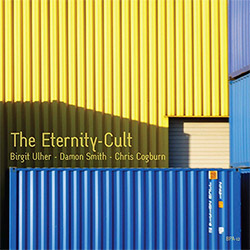


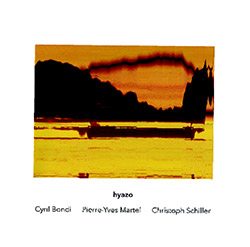



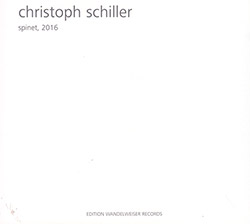
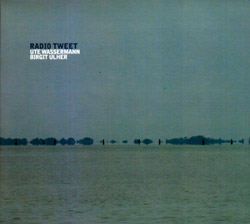

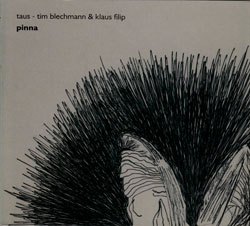
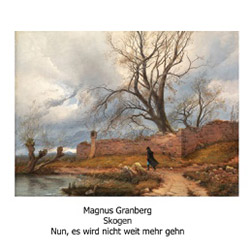
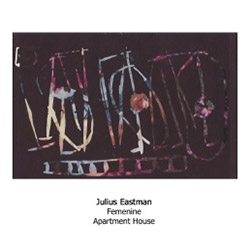
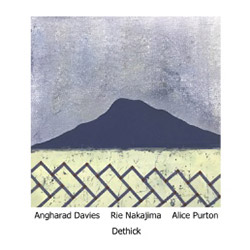

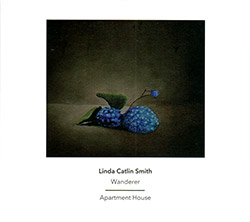












![Guy, Barry / Ken Vandermark: Occasional Poems [2 CDs]](https://www.teuthida.com/productImages/misc4/34849.jpg)
![Novoa / Carter / Mela Trio: Vol.1 [VINYL]](https://www.teuthida.com/productImages/misc4/35236.jpg)


![Elephant9 : Mythical River [VINYL]](https://www.teuthida.com/productImages/misc4/34624.jpg)
![Evans, Peter (Evans / Eldh / Black): Extra [VINYL]](https://www.teuthida.com/productImages/misc4/35279.jpg)

![McPhee, Joe: Straight Up, Without Wings [BOOK]](https://www.teuthida.com/productImages/misc4/35454.jpg)
![Jeck, Philip: rpm [2 CDs]](https://www.teuthida.com/productImages/misc4/35455.jpg)













![Barker / Parker / Irabagon: Bakunawa [VINYL]](https://www.teuthida.com/productImages/misc4/35533.jpg)
![Blaser, Samuel / Marc Ducret / Peter Bruun: Dark Was The Night, Cold Was The Ground [VINYL 10-inch]](https://www.teuthida.com/productImages/misc4/35492.jpg)








![Warren, Kenny (Warren / Hoffman / Ellman): Sweet World [VINYL]](https://www.teuthida.com/productImages/misc4/35451.jpg)




![Blake, Ran / Dave Knife Fabris: Live Amsterdam 2006, First Visit [CD + POSTCARDS]](https://www.teuthida.com/productImages/misc4/35275.jpg)













![DNS: Taking Big Bites Of The Khandas Three Cafes Deep [2 CDs]](https://www.teuthida.com/productImages/misc4/35334.jpg)




![Cleaver, Gerald: The Process [VINYL]](https://www.teuthida.com/productImages/misc4/34966.jpg)




![Alva Noto: HYbr:ID II [VINYL 2 LPs]](https://www.teuthida.com/productImages/misc4/35201.jpg)

![Baron, Derek / Luke Martin: Distinct and Concealed [CASSETTE + DOWNLOAD]](https://www.teuthida.com/productImages/misc4/35079.jpg)

![Lyle, Erica Dawn : Colonial Motels [CASSETTE + DOWNLOAD]](https://www.teuthida.com/productImages/misc4/35080.jpg)









![Sanna, Claudio: Compositori Sardi Contemporanei II [2 CDs]](https://www.teuthida.com/productImages/misc4/35317.jpg)







![Zurria, Manuel: Fame di Vento [3 CDs]](https://www.teuthida.com/productImages/misc4/35167.jpg)

![Granberg, Magnus / Nattens Inbrott / Skogen: Holde Traume, Kehret Wieder! [2 CDs]](https://www.teuthida.com/productImages/misc4/35038.jpg)
![Frey, Jurg: Outermost Melodie [2 CDs]](https://www.teuthida.com/productImages/misc4/35039.jpg)

![Pavone, Jessica: Reverse Bloom [VINYL]](https://www.teuthida.com/productImages/misc4/34895.jpg)




![Modney (Modney / Wooley / Gentile / Roberts / Pluta / Symthe / ...): Ascending Primes [2 CDs]](https://www.teuthida.com/productImages/misc4/34852.jpg)









![Elephant9 with Terje Rypdal: Catching Fire [VINYL 2 LPs]](https://www.teuthida.com/productImages/misc4/35355.jpg)
![Deerlady (Obomsawin, Mali / Magdalena Abrego): Greatest Hits [VINYL]](https://www.teuthida.com/productImages/misc4/34876.jpg)




![Haino, Keiji: Black Blues [2 CDs]](https://www.teuthida.com/productImages/misc4/35109.jpg)



![Surplus 1980: Illusion of Consistency [CD]](https://www.teuthida.com/productImages/misc4/35069.jpg)
![Staiano, Moe: Away Towards the Light [VINYL + DOWNLOAD]](https://www.teuthida.com/productImages/misc4/35037.jpg)



![Caveira (Gomes / Sousa / Abras / Ferrandini): Ficar Vivo [VINYL]](https://www.teuthida.com/productImages/misc4/34643.jpg)
![Gregg, J. J. / David Van Auken: Lunar Prairie [CD w/ DOWNLOAD]](https://www.teuthida.com/productImages/misc4/34611.jpg)

![Coultrain: Mundus [VINYL]](https://www.teuthida.com/productImages/misc4/32439.jpg)
![Mattin: Songbook #6 [VINYL]](https://www.teuthida.com/productImages/misc4/27317.jpg)
![Punkappella: Wake Up [7-inch VINYL]](https://www.teuthida.com/productImages/misc4/17519.jpg)
![Residents, The: WARNING: UNiNC.: Live And Experimental Recordings 1971-1972 [VINYL 2 LPs]](https://www.teuthida.com/productImages/misc4/31521.jpg)
![Coultrain: Phantasmagoria [VINYL]](https://www.teuthida.com/productImages/misc4/30142.jpg)
![Lennon, Sean Ono: Asterisms [VINYL]](https://www.teuthida.com/productImages/misc4/34517.jpg)

![Coley, Byron: Dating Tips for Touring Bands [VINYL]](https://www.teuthida.com/productImages/misc4/17906.jpg)

![Lost Kisses: My Life is Sad & Funny [DVD]](https://www.teuthida.com/productImages/misc4/lostKissesDVD.jpg)